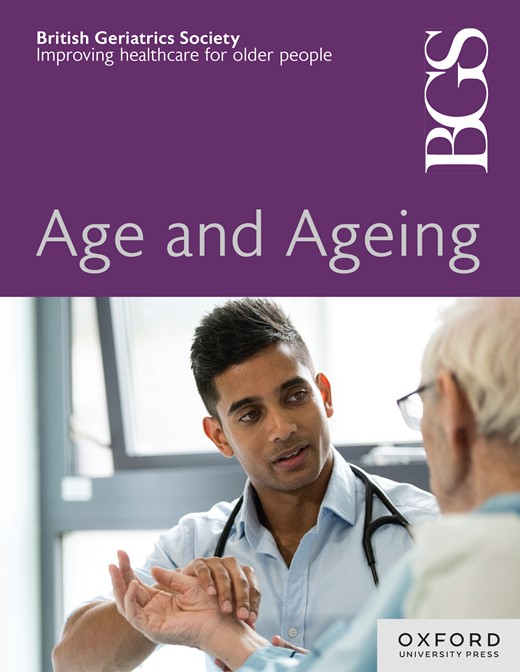在英国生物银行队列中重新评估睡眠困难作为痴呆的风险因素:使用半竞争风险方法解决生存偏差
IF 7.1
2区 医学
Q1 GERIATRICS & GERONTOLOGY
引用次数: 0
摘要
睡眠困难是老年人普遍存在的睡眠障碍,在之前的流行病学研究中显示出与痴呆风险的矛盾关联。新出现的证据表明,生存偏差——有睡眠困难的人的过早死亡掩盖了痴呆症的风险——可能解释了这些不一致。方法:我们分析了457,367名年龄在40-69岁之间的英国生物银行参与者的数据,这些参与者在2006年至2010年期间基线登记,并随访至2022年。通过自我报告的问卷评估睡眠困难,从电子健康记录中获得痴呆。为了解决生存偏倚,我们采用了一个半竞争风险框架,联合建模痴呆发病率和死亡率,并将结果与传统的Cox比例风险模型进行对比。结果半竞争风险分析表明,在整个样本中,通常的睡眠困难适度增加血管性痴呆的风险(完全校正HR 1.14, 95% CI 1.02-1.28),轻微增加全因痴呆的风险(HR 1.03, 95% CI 0.98-1.08)。这种关联在年轻人(55岁以下)和低APOE风险(APOE ε4非携带者)中尤其强烈,当调整年龄、性别和教育程度时。相反,Cox模型表明,在总样本中,通常的睡眠困难与全因痴呆之间存在保护性关联,这与英国生物银行之前的研究结果一致。这种差异凸显了生存偏差是如何扭曲风险估计的。我们的研究结果解决了相互矛盾的证据,证明了睡眠困难在考虑竞争死亡率时的直接痴呆风险。当存在生存偏差时,半竞争风险方法为老龄化研究提供了一个强有力的框架。在临床上,这些结果强调了睡眠困难管理作为中老年痴呆症预防的可修改目标。本文章由计算机程序翻译,如有差异,请以英文原文为准。
Re-evaluating sleep difficulty as a risk factor for dementia in the UK Biobank cohort: addressing survival bias using a semi-competing risks approach
Introduction Sleep difficulty, a prevalent sleep disturbance in ageing populations, has shown paradoxical associations with dementia risk in prior epidemiological studies. Emerging evidence suggests that survival bias—where premature mortality in individuals with sleep difficulty obscures dementia risk—may explain these inconsistencies. Methods We analysed data from 457,367 UK Biobank participants aged 40–69 years who were enrolled at baseline between 2006 and 2010 and followed until 2022. Sleep difficulty was assessed via self-reported questionnaires, and dementia was obtained from electronic health records. To address survival bias, we employed a semi-competing risks framework that jointly models dementia incidence and mortality, contrasting results with conventional Cox proportional hazard models. Results Semi-competing risk analyses suggested that usual sleep difficulty modestly increased risks of vascular dementia (fully adjusted HR 1.14, 95% CI 1.02–1.28) and slightly increased all-cause dementia (HR 1.03, 95% CI 0.98–1.08) in the total sample. The association is particularly strong in younger adults (below 55 years old) and low APOE risk (APOE ε4 non-carriers) when adjusted for age, sex and education. Conversely, Cox models suggested a protective association between usual sleep difficulty and all-cause dementia in the total sample, aligning with prior UK Biobank studies. This discrepancy highlights how survival bias distorts risk estimates. Discussion Our findings resolve conflicting evidence by demonstrating sleep difficulty’s direct dementia risk when accounting for competing mortality. The semi-competing risks approach provides a robust framework for ageing research, when survival bias is present. Clinically, these results underscore sleep difficulty management as a modifiable dementia prevention target in mid-to-late life.
求助全文
通过发布文献求助,成功后即可免费获取论文全文。
去求助
来源期刊

Age and ageing
医学-老年医学
CiteScore
9.20
自引率
6.00%
发文量
796
审稿时长
4-8 weeks
期刊介绍:
Age and Ageing is an international journal publishing refereed original articles and commissioned reviews on geriatric medicine and gerontology. Its range includes research on ageing and clinical, epidemiological, and psychological aspects of later life.
 求助内容:
求助内容: 应助结果提醒方式:
应助结果提醒方式:


